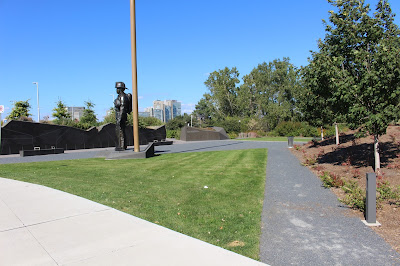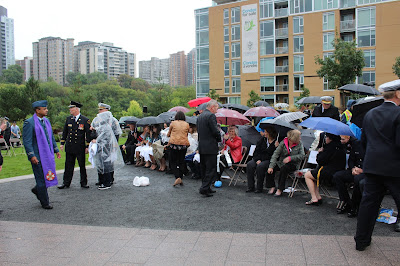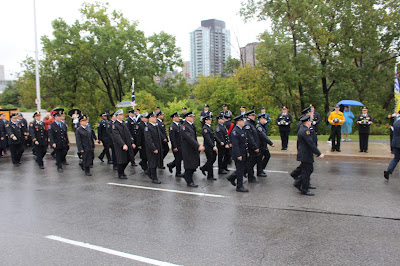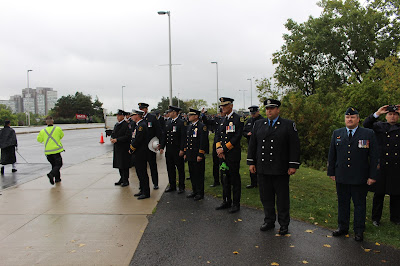 |
| Walkways occupy the south east corner of the memorial site. For the annual memorial ceremony these provide a parade route for the procession of bands, honour guard, and participating firefighters. |
 |
| Stone benches provide places to sit in a quiet contemplative environment. |
 |
| In the original plans for the site the wall would extend around this contemplative area. The wall became shorter but the intent to provide a secluded area for reflection is still accomplished. |
 |
| The square metallic panel on the tree planter provides access to eight 20 amp outlets. These provide electric power for sound equipment used during memorial ceremonies held on the site. |
 |
| The large flat open space provides a place for people to participate in the annual Canadian Firefighters Memorial Ceremony. |
 |
| He points to the wall where Canadian firefighters killed in line of duty are commemorated. |
 |
| Any memorial site to firefighters should have the Maltese cross and there it is on the Firefighter's helmet. The wording on the cross is, "Fire Service Incendie Canada." |
 |
| The firefighter wears the Canadian flag on his shoulder. |
 |
| A series of short vertical columns occupies the base of the wall. Alternating columns contain lights. Each one has a small numbered plaque at its top. This number will help those who want to find a specific name on the wall. In the database of the fallen on the Canadian Fallen Firefighters Foundation web site, clicking on a firefighter's name will bring up more information about that firefighter. Included in that information is a number that corresponds to the closest number atop one of these columns. |
 |
| This sign contains a quick response (QR) code that links to Canadian Heritage's web page for the memorial. |
 |
| Although the presence of a fire hydrant on the memorial site is completely coincidental it is appropriate to be there. |




















































































































































































































































